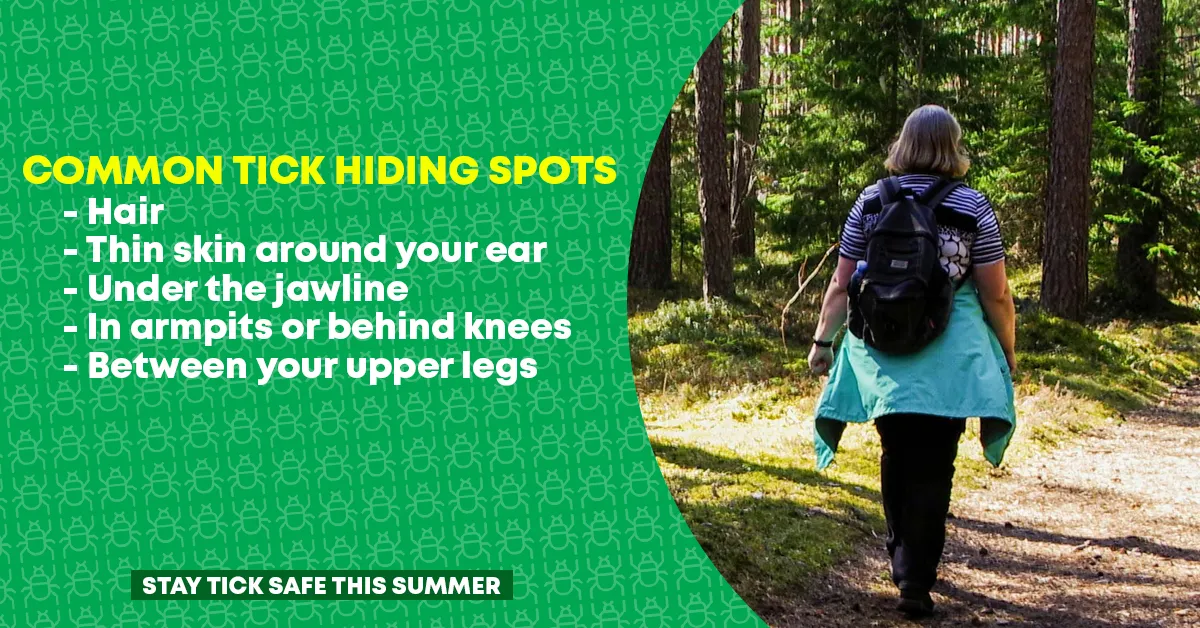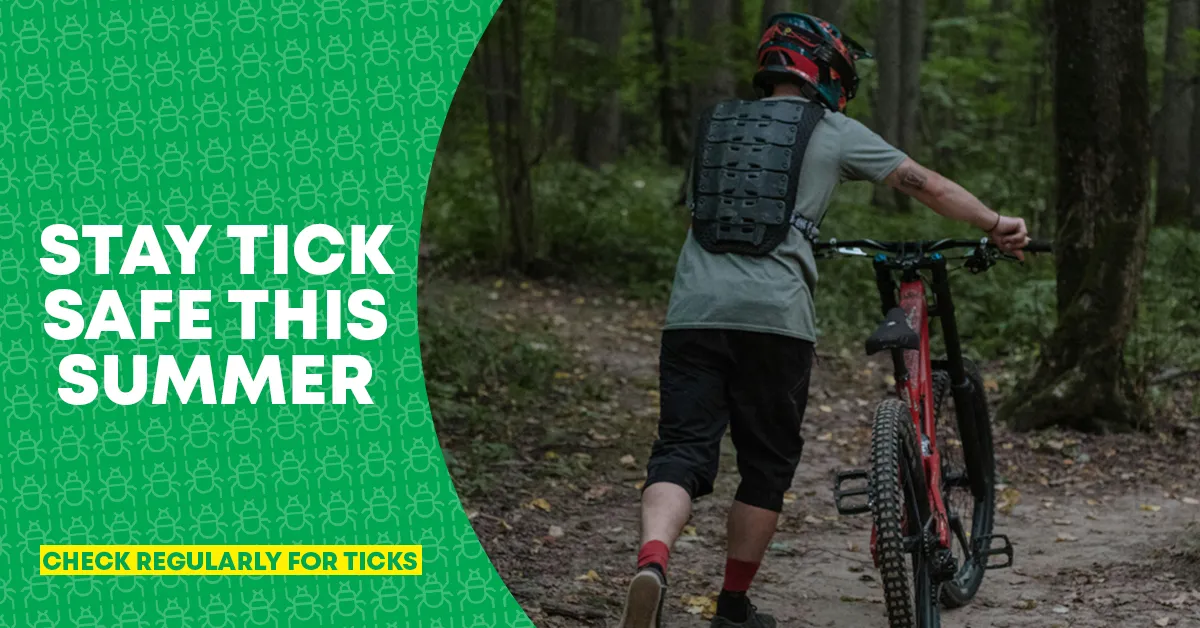From May to October are some of the nicest months to be outside in central Minnesota. But it’s also tick season. You may think ticks are just around from Memorial Day to Labor Day, but the season can start earlier (and run later) than many realize.
It’s important to check yourself, children, and pets regularly for ticks during this time.
How can you avoid ticks?
It is great to get out and enjoy the nice weather this summer, do not let ticks scare you away! But it’s important to remember some precautions to decrease your possible risk.
First, understand where ticks commonly reside. They often cling to tall blades of grass, weeds, or shrubs. Ticks wait for you to brush by so that they can attach themselves to you.
Naturally, this is particularly a problem in wooded areas. Your best defense is sticking to paths, away from tall brush. If you’re walking with a dog through a wooded area, keep them leashed and close to the trail.
As an extra precaution, you can wear tall socks and pants. Tuck the pants under your tall socks to form a barrier.
Where should you check for ticks?
Some ticks are quick to bite, while others take their time, searching for an optimal location. While some ticks may be very visible (right in the middle of your shin for instance) others may target one of their more ideal body locations.

Ticks may try to target:
– Hair
– Thin skin around your ear
– Under the jawline
– In armpits or behind knees
– Between your upper legs
How do you remove a tick?
Ticks should be removed using tweezers. Grab the tick with the tweezers and gently pull upward. It’s important not to twist the tick during removal as this can cause part of the tick to remain attached to your skin.
After removing the tick, place it in a plastic bag to bring to your medical clinic for identification.
What should I do if I think a tick has bitten me?
See your medical provider for an examination. They can look at the tick bite mark, and the tick itself (assuming you were able to bag it upon removing it). Lyme Disease is always a concern regarding tick bites, but time plays a big role.

If a tick is removed in less than 24 hours it is generally unlikely disease could spread. It takes at least about 36 hours for disease transmission to take place. This is why frequent and regular checking for ticks can make a substantial difference in protecting yourself.


